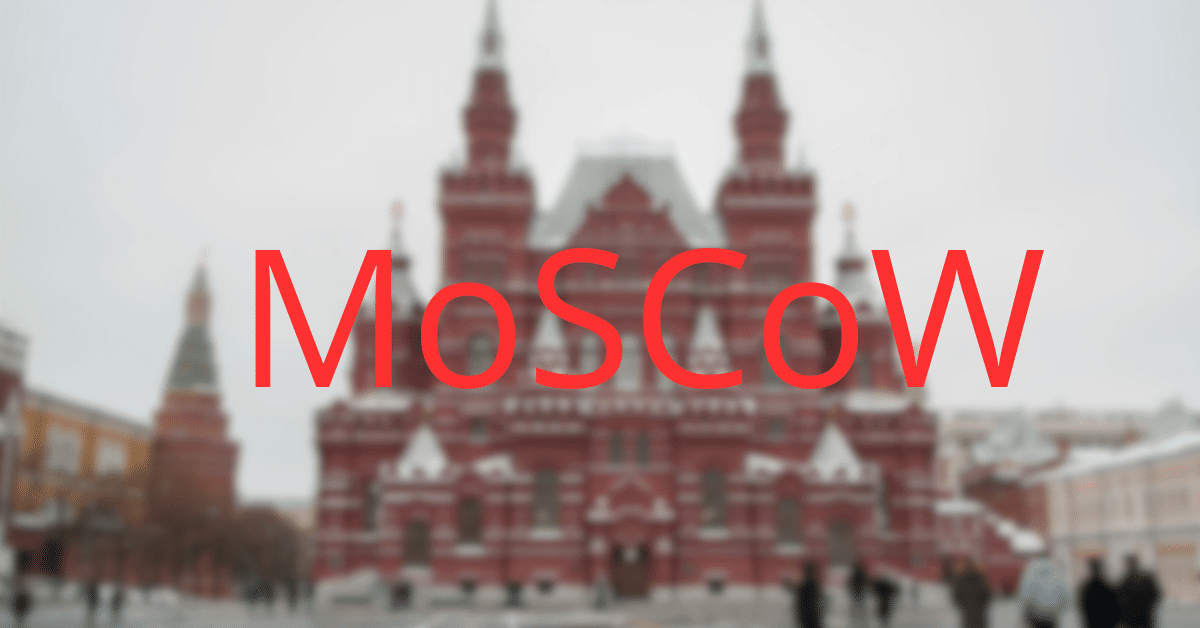Welcome to the world of modern project management, where everyone seems to be swimming in an ocean of priorities. We’ve all been there. Struggling to juggle a plethora of tasks, each one seemingly more “urgent” than the last. It can sometimes feel like you’re trying to bake a multi-layered wedding cake during an earthquake, with multiple people yelling out their own conflicting cake flavors at you. If this scenario feels all too familiar, then you’re in luck because the MoSCoW method is here to help.
In this comprehensive guide, we’re going to delve into this powerful yet straightforward technique for project prioritization. By the end of it, you’ll have the tools and insights to tame your unruly workload, make effective decisions, and deliver successful projects. And no, it doesn’t involve sipping vodka or diving into a Dostoevsky novel, though we fully support those activities in your downtime!
Understanding the MoSCoW Method: An Overview
Key Takeaways
- The MoSCoW method is an effective, straightforward prioritization technique widely used in project management, agile software development, and business analysis.
- It provides a clear, shared understanding of what’s critical (Must have), important (Should have), nice-to-have (Could have), and not necessary at the moment (Won’t have) in a project.
- By focusing on delivering maximum value, the MoSCoW method can help optimize the use of resources and maximize your ROI.
- The MoSCoW method fosters transparent communication, boosts productivity, and helps prevent scope creep, leading to a smoother, more efficient project delivery process.
- Adopting the MoSCoW method means you’re not just improving your project management today, but also setting yourself up for success in the future.
The MoSCoW method, despite its Russian capital-sounding name, isn’t about packing for a Siberian winter. Instead, it is a potent prioritization technique used in project management, agile software development, and business analysis. The catchy name is an acronym for: Must have, Should have, Could have, and Won’t have.
These four categories form the cornerstone of this method, helping teams to classify tasks, requirements, or features in order of importance. This clarity promotes focused efforts on what’s truly critical, enabling effective project delivery. It’s like Marie Kondo-ing your to-do list, removing clutter, and sparking joy in your project management process.
Deciphering MoSCoW: The Significance of Each Element
Let’s dive a little deeper into the MoSCoW pool:
- Must have: These are the heart and soul of your project, your non-negotiables. They’re so essential that without them, your project would be like a car without an engine – it just won’t move forward.
- Should have: These elements are high-priority but not absolutely crucial. They’re akin to the GPS in your car – sure, you can drive without it, but it certainly makes the journey smoother and more efficient.
- Could have: These features are like the nice-to-haves, akin to a heated seat in your car. Not essential for the journey, but they enhance the user experience if time and resources allow.
- Won’t have: This category might sound negative, but it’s about being realistic. These are features that you agree will not be implemented in the current version of the project, but might be considered for future iterations. It’s like recognizing that you won’t be installing a mini-fridge in your car, at least not right now.
In essence, the MoSCoW method is about differentiating between the needs and wants of a project. It’s about learning to tell the difference between your project’s essentials and desirables, like picking groceries while on a budget.
Applying the MoSCoW Method in Agile Project Management
In the dynamic world of Agile project management, the MoSCoW method acts like an anchor in a storm. It gives the team a clear focus, promotes better communication, and improves project outcomes.
When you integrate the MoSCoW method into your Agile sprints, you’re making sure that the most critical functionalities (Must haves) get delivered first, while the important-but-not-critical features (Should and Could haves) follow at a lower priority. It’s like setting up a VIP guest list for your project’s tasks, ensuring that the VIPs are always the first to enter, while the rest of the partygoers follow.

Maximizing ROI with MoSCoW Prioritization: Practical Examples
Now, let’s translate all of this into a practical scenario. Suppose you’re building a mobile app. Your ‘Must haves’ might be things like a secure login system, intuitive user interface, and essential functionalities. ‘Should haves’ might be features that provide extra convenience, like integration with social media or cloud backup. ‘Could haves’ could be additional, non-critical features that enhance user experiences, like personalized themes or customized notifications. ‘Won’t haves’ might be ambitious features like VR integration – great to consider for the future, but not for the present.
By prioritizing this way, you ensure that your team is always working on the most impactful features. This means that even if you don’t manage to implement every feature, you’ll end up with a functional product that meets the essential needs of your users. You’re not just optimizing the use of your resources but also delivering the most value, thereby maximizing your ROI.
Transforming Project Delivery: The Long-Term Benefits of the MoSCoW Method
When correctly implemented, the MoSCoW method can bring about a transformative shift in your project delivery process. It enhances productivity by eliminating wasteful efforts on low-priority tasks. It fosters transparent communication, as everyone on the team knows what’s important and why. It mitigates the risk of scope creep, keeping the project aligned with the original goals and business objectives. It’s like brewing the perfect cup of coffee that kick-starts your day and keeps you energized.
Conclusion
In summary, the MoSCoW method is not just a way to manage your current projects effectively; it’s a long-term strategy for future-proofing your subsequent ventures. It’s about building a robust foundation of prioritization that can withstand the ebb and flow of shifting business needs and unexpected changes, just like a seaworthy ship ready to navigate through stormy waters.
So, the next time you’re handed a project with a massive scope and tight deadlines, remember – it’s not a nightmare. It’s an opportunity to MoSCoW it!
See our comprehensive overview of time management methods for other ways to reduce stress in your personal or professional life. Or try a number of different breathing techniques.
Frequently Asked Questions
What is MoSCoW model stands for?
The MoSCoW model is an acronym used to denote a prioritization technique for managing project requirements. Each letter of the acronym signifies a category of requirements: ‘M’ stands for Must-have, ‘S’ stands for Should have, ‘C’ stands for Could have, and ‘W’ stands for Won’t have (or would like but won’t get in this time frame). This model aids in reaching a common understanding with stakeholders on the importance they place on the delivery of each requirement.
What is an example of the MoSCoW technique?
Imagine you’re designing a new mobile application. Using the MoSCoW technique, you might decide that user login functionality (using email and password) is a ‘Must have’. The option to log in using social media accounts might be a ‘Should have’ – nice to have, but not critical for the initial launch. A feature like customized user avatars could be a ‘Could have’, something that would be nice to include if time and resources allow. Finally, an advanced feature like app integration with home smart devices might be a ‘Won’t have’ for now – interesting to consider for future updates, but out of scope for the current project.
What is the MoSCoW principle in agile?
In the agile project management methodology, the MoSCoW principle is used to prioritize and manage requirements or user stories. It aids teams in deciding which features must be developed and included in a particular release (Must haves), which features are less critical but highly desirable (Should haves), which features would be beneficial to include if it is possible (Could haves), and which ones are least critical or can be postponed for future releases (Won’t haves). It’s a way of negotiating and communicating priorities effectively within the project team and with stakeholders.
What is the purpose of MoSCoW analysis?
The main purpose of MoSCoW analysis is to provide a clear and shared understanding of priority across all stakeholders. It helps to manage expectations and make the project scope clear to everyone involved. MoSCoW analysis ensures that everyone is on the same page about what needs to be done and when, and helps prevent scope creep by making it easier to decide what should be included in a particular release, and what should be deferred or omitted. It’s all about maximizing value while minimizing risk and waste.
What is the difference between MoSCoW and traditional prioritization methods?
Unlike traditional prioritization methods that may rank requirements only by importance, the MoSCoW method also considers the time factor – it’s not just about what needs to be done, but also about what can realistically be achieved within a specific timeframe. This makes it especially useful for projects using Agile methodologies, where work is delivered in short, iterative cycles and it’s crucial to determine what should be included in each cycle. Furthermore, by categorizing tasks into four distinct groups (Must, Should, Could, Won’t), MoSCoW provides a more nuanced view of priorities than a simple ranked list.




